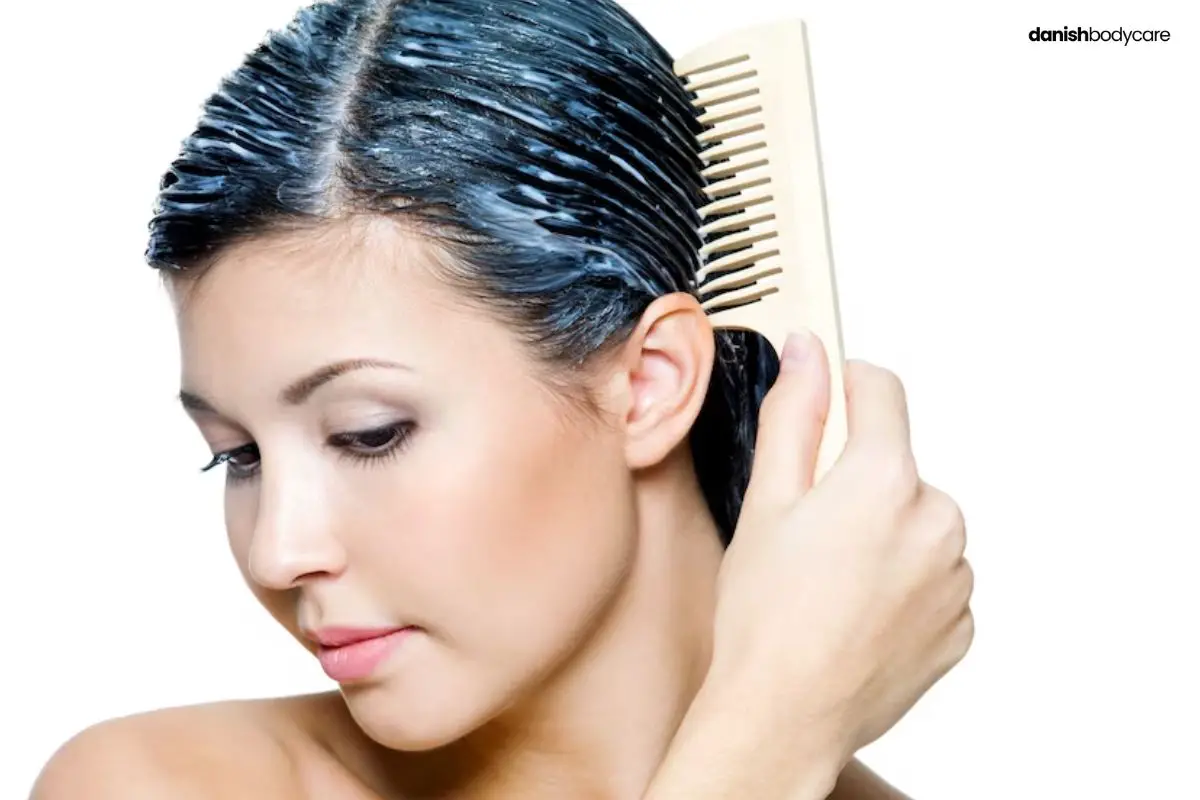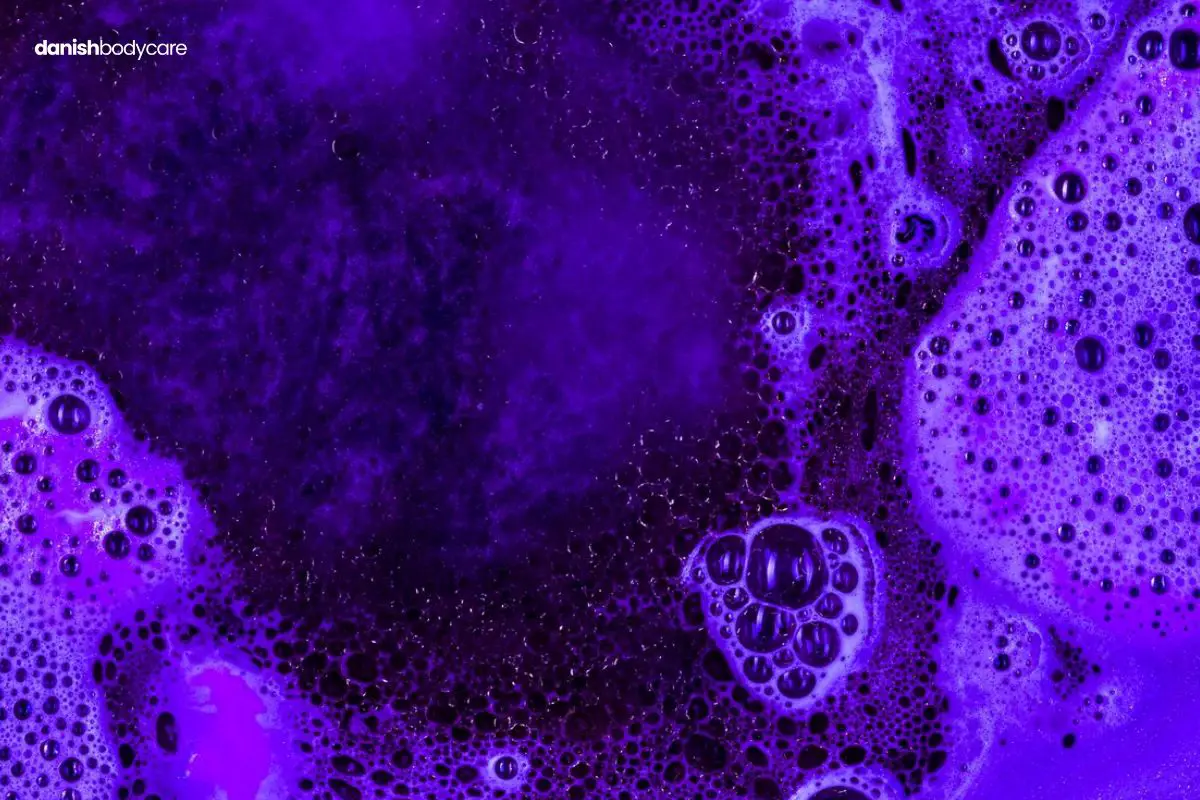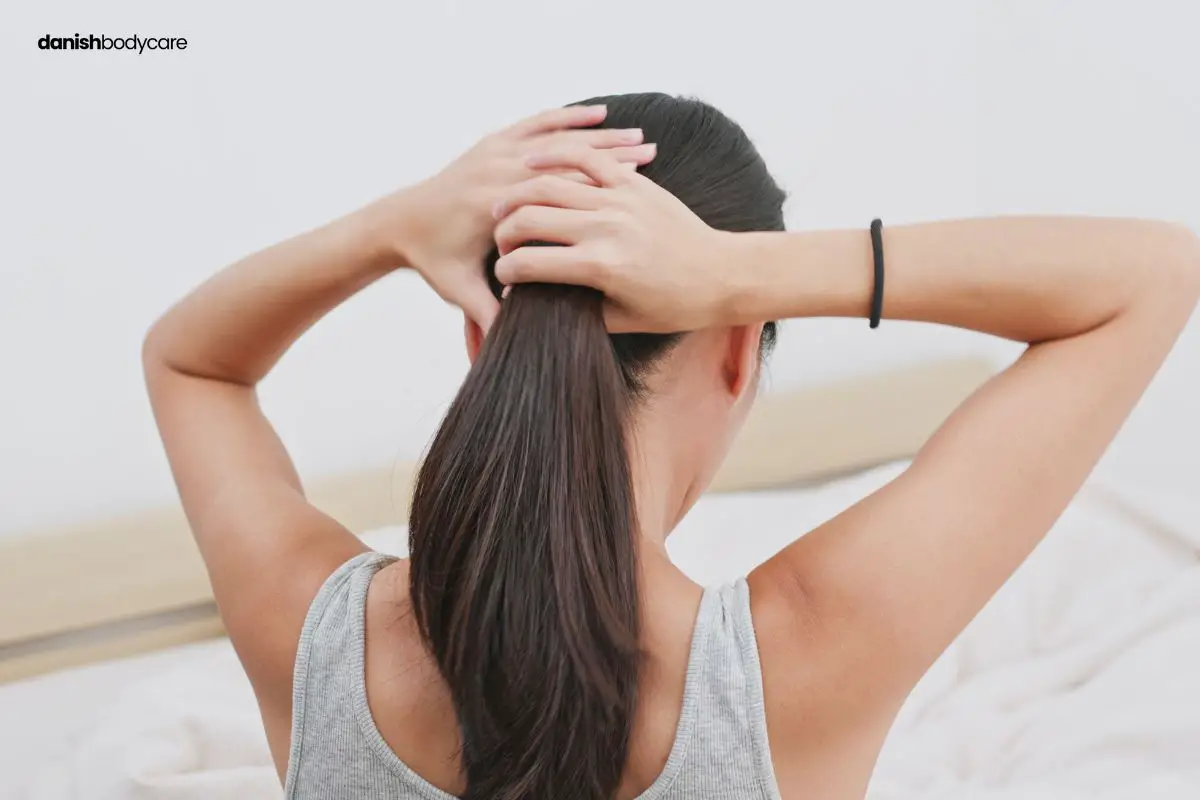Struggling with dry, hard-to-moisturize hair? We got you!
Moisturizing low porosity hair can be a challenge, but fret not. In fact, about 20% of people have low porosity hair.
Your hair needs special care and attention to lock in moisture.
Discover simple and effective tips to hydrate your locks and reduce frizz. With these tricks, you’ll transform your hair into a well-hydrated, healthy mane.
Say hello to the perfect moisture for your low porosity hair!
What Is Low Porosity Hair?
Low porosity hair refers to the hair type where the cuticle layer lies flat and tight around the hair shaft. This characteristic makes it difficult for moisture and nutrients to penetrate the hair.
Knowing how to spot signs of low porosity in your hair will help you bring back the moisture your hair needs.
What Are The Properties of Low Porosity Hair?
The main property of low porosity hair is its resistance to absorbing moisture.
The cuticle layer forms a barrier around your hair. This barrier prevents water and other substances from entering the hair shaft.
Its moisture-resistant nature can lead to dryness, brittleness, and unhealthy hair. To better manage low porosity hair, it’s important to identify its characteristics. A comprehensive guide can help you spot the signs.
Genetics, chemical treatments, and environmental stressors contribute to low hair porosity. To determine your hair porosity, follow the tests found in this guide. Knowing your hair porosity is essential to ensure proper care and treatment.
For more detailed information, explore this complete low porosity hair guide.
How To Test If You Have Low Porosity Hair
To find out if you have low porosity hair, you can try a few simple tests at home.
They will help you understand how your hair absorbs moisture and determine the best way to care for it.
The Float Test
- Take a few strands of your clean, dry hair.
- Fill a bowl with room-temperature water.
- Place your hair into the water and wait for 2-4 minutes.
If your hair floats on the water’s surface, it is likely low porosity. This means your hair doesn’t absorb water well. If it sinks, you may have higher porosity hair.
The Slip ‘n’ Slide Test
- Take a strand of your hair and hold it between your thumb and index finger.
- Slide your fingers up the hair shaft, from the tip to the root.
If your hair feels smooth, it likely has low porosity. It means your thick hair cuticles block moisture entry. If it feels rough or bumpy, your hair may have higher porosity.
The Shower Test
- Observe your hair while you shower.
- See how long it takes for your hair to get soaked.
If the water beads up on your hair instead of soaking in, you may have low porosity hair. The same goes for hair that takes long to get soaked.
When you have closed cuticles, it’s harder for water to penetrate the hair shaft. If your hair gets wet fast, it might have higher porosity.
6 Common Signs of Low Porosity Hair

Is your hair hard to hydrate? These are the six common signs of low porosity hair:
- Greasy texture after a moisturizing treatment
- White, flaky substances in your hair after showering
- Your hair doesn’t dry up fast
- Your hair doesn’t stretch or snap back in place
- Split ends, split ends, split ends
- Flat, unshiny hair
1. Greasy Hair Even After Moisturizing
If your hair still feels greasy or oily after moisturizing, it’s a sign of low porosity hair.
When you have packed hair cuticles, it prevents moisture from penetrating. As a result, the products end up sitting on your hair instead sinking in.
2. Product Buildup or Residue
You might notice a white, flaky substance on your hair even after washing.
Low porosity hair is prone to experiencing product buildup or residue. This is due to the products not being able to penetrate your hair’s cuticle and get trapped.
3. Your Hair Takes Ages to Dry
Another sign of low porosity hair is when it takes a long time to air dry, even after a thorough towel-dry.
This is because the dense cuticles don’t allow water to seep out.
4. Lack of Elasticity in Hair
Low porosity hair often lacks elasticity, which can make it prone to breakage.
To test your hair’s elasticity, stretch a strand between your fingers. If it doesn’t bounce back or snap back into place, then it likely has low porosity.
5. Split Ends
Split ends are common with low porosity hair because of the lack of moisture and elasticity. It can lead to weak, brittle hair.
6. Dull Hair
Finally, your hair may appear dull if it has low porosity. The dense cuticles don’t reflect light as much, which results in a lack of shine.
Can You Change Hair Porosity?
Genetics determines hair porosity. But, you can make some improvements by using the right products and techniques.
Clarifying shampoo helps remove product buildup that stops moisture absorption in your hair.
Lightweight, sulfate-free conditioner also helps avoid weighing down hair or causing more buildup.
Apply an even layer of conditioner. Focus on the ends of your strands to prevent dryness and breakage over time.
Other strategies you can do to improve product absorption in your hair are:
- Avoid harsh chemicals and excessive heat styling
- Give your hair a pre-shampoo treatment
- Moisturize with a deep conditioning treatment
1. Protect Your Hair
Limit hair exposure to harsh chemicals or excessive heat styling. These can cause damage and further decrease your hair porosity.
2. Pre-Poo Treatment
Apply a lightweight oil or conditioner to your hair before shampooing.
This can help you to better control the product buildup. It also ensures that the right nutrients absorb into your hair.
3. Deep Conditioning
Regular deep conditioning boosts moisture and nutrients in your hair, making it stronger. This can improve the health and manageability of your low porosity hair.
How to Wash and Clarify Low Porosity Hair
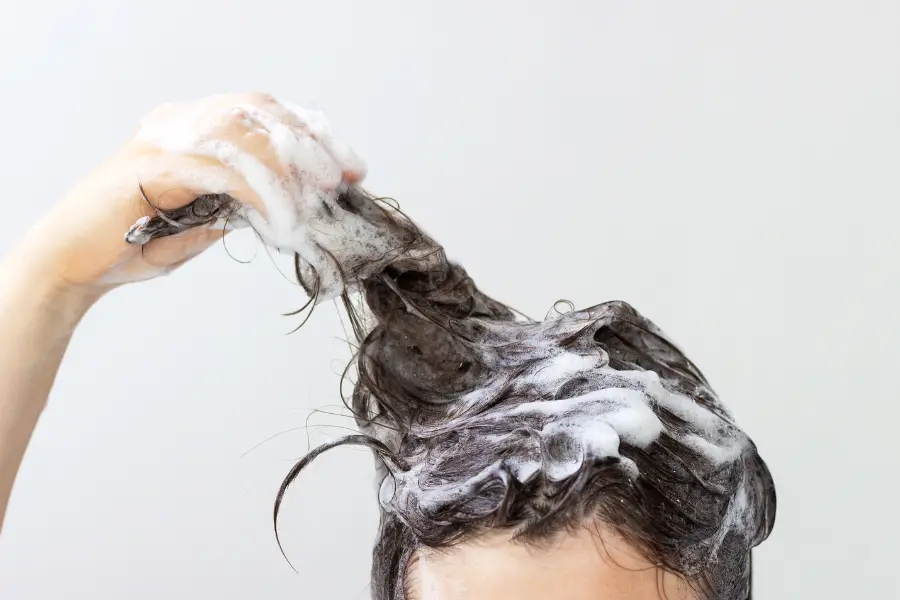
How can you maintain your hair’s moisture levels and reduce product buildup?
Here’s an overview of the steps for washing and clarifying low porosity hair:
- Choose a shampoo designed for low porosity hair.
- Use a clarifying shampoo every 2 to 4 weeks.
- Massage the scalp when washing with shampoo or clarifying shampoo.
- Choose a conditioner suitable for low porosity hair.
- Apply conditioner to the lengths and ends, avoiding the roots.
How to Moisturize Low Porosity Hair
It’s difficult to moisturize low porosity hair, but it’s not impossible. Here are seven ways to do it:
- Wash with a gentle, cleansing shampoo to avoid product buildup
- Apply a moisturizing hair mask for added nourishment
- Lock in moisture with a leave-in conditioner
- Switch to silk pillowcases
- Open up your hair cuticles with a steamer or steaming cap
- Include a clarifying shampoo in your hair care routine
- Add extra hydration with organic oils
1. Gentle and Cleansing Shampoo
Use a gentle and cleansing shampoo to prevent product buildup and remove dirt from your hair. Be sure to rinse off all the shampoo to avoid creating more buildup.
Look for shampoos without harsh chemicals designed for low porosity hair.
2. Moisturizing Hair Mask
After shampooing, it’s important to apply a moisturizing hair mask.
Look for a mask with hydrating ingredients formulated for low porosity hair. These ingredients can help to nourish your hair and provide added moisture.
Massage the hair mask into your strands, then leave it on for the recommended time before rinsing.
3. Leave-In Conditioner
After using the hair mask, apply a leave-in conditioner to add moisture and lock in hydration. This step is vital because low porosity hair loses moisture fast.
Choose a lightweight product to avoid buildup and use an even amount, focusing on the dry ends of your hair.
4. Silk Pillowcases
To support your hair’s moisture while you sleep, invest in silk pillowcases. Unlike cotton, silk creates less friction, reducing moisture loss and breakage.
Swap your regular pillowcases for silk ones to enjoy these advantages.
5. Steamer or Steaming Cap
To add more moisture to low porosity hair, use a steamer or steaming cap.
They provide warmth and moisture. Plus, they open up the hair cuticles for better product penetration.
Incorporate them into your routine, especially when using hair masks or deep conditioners. This extra step helps keep moisture and improves hair health.
6. Clarifying Shampoo
To moisturize low porosity hair well, start with clean hair.
Use a clarifying shampoo to remove any buildup on your hair strands. Look for a clarifying shampoo that is sulfate-free and gentle on your hair.
Avoid shampoos that can make low porosity hair even more resistant to moisture.
Read 13 Important Ingredients to Avoid for Low Porosity Hair for the complete list.
7. Natural Oils and Their Benefits
Moisturizing low porosity hair is easier with lightweight natural oils.
These include grapeseed, jojoba, and sweet almond oils. They penetrate hair without leaving a greasy feel and seal in moisture.
Also, consider aloe vera and glycerin for extra hydration, as they work well for low porosity hair.
Application Techniques for Better Absorption
If you’ve tried the methods above without luck, you may have to change how you do it. Because there are multiple ways to moisturize, not just multiple products.
Greenhouse or Baggy Method
The Greenhouse or Baggy Method is an easy way to moisturize low porosity hair.
First, apply a leave-in conditioner to your damp hair. Then, cover your head with a plastic cap or shower cap.
By trapping the heat, you open up the hair cuticle, making it easier for the moisturizers to absorb.
Leave the cap on for at least 30 minutes or even overnight for better results.
Humectants and Emollients
Humectants, like honey, attract moisture from the air and help your hair stay hydrated. Mix a small amount of honey with your regular moisturizer, and apply it to your hair.
Emollients, such as oils or creams, are also important for sealing in that moisture.
Use the LCO (Liquid, Cream, Oil) method where you apply products in this order:
- Liquid (water or leave-in conditioner)
- Cream (moisturizers)
- Oil (to seal the moisture in)
This layering helps lock in hydration for low porosity hair.
Protective Hair Styles
Protective hairstyles can reduce damage to low porosity hair and improve moisture retention:
- Braids
- Twists
- Buns
- Updos
These styles keep the ends of your hair tucked away to prevent moisture loss.
Common Mistakes That Lead to Low Porosity Hair
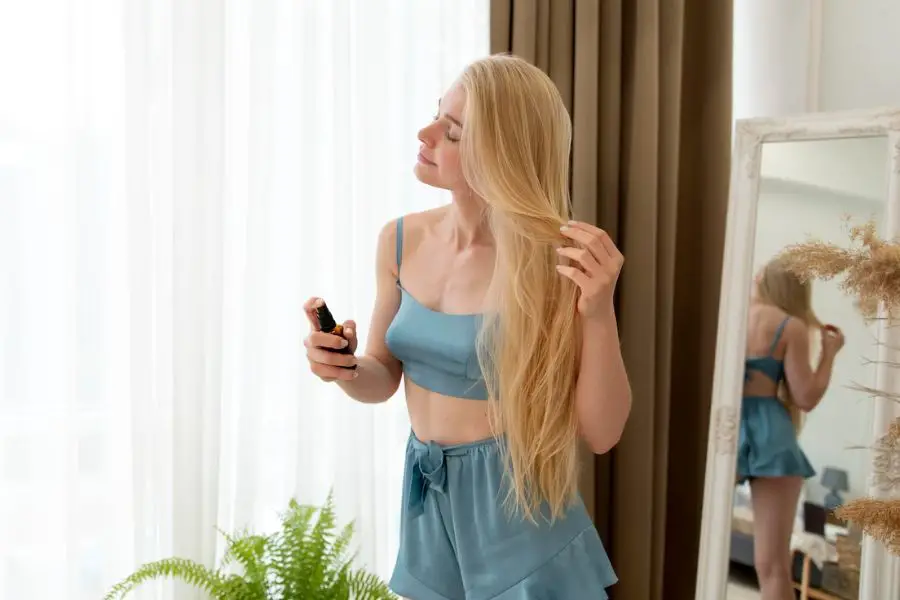
When moisturizing low porosity hair, there are some pitfalls you should avoid. To keep your hair healthy and well-hydrated, be mindful of these common mistakes:
Heavy Oils and Shea Butter
Heavy oils like castor oil or shea butter can weigh your hair down. These ingredients can also prevent water and other moisture from getting into your hair shaft.
Instead, opt for lighter oils like almond, jojoba, or argan oil.
Overusing Silicones
Silicones, commonly found in hair products, can create a barrier on the hair shaft. This makes it difficult for low porosity hair to absorb moisture.
Look for silicone-free products, or use a clarifying shampoo regularly to remove buildup.
Applying Products to Dry Hair
To maximize the absorption of moisture into your hair, apply products to damp hair. This allows the water to penetrate your hair shaft better, leaving your hair moisturized and less brittle.
Moisture for Growth
Moisture is important for growth. Without moisture, your hair won’t be as strong or healthy.
To grow low porosity hair faster, use deep conditioning treatments every couple of weeks. These treatments restore moisture, promote elasticity, and improve overall hair health.
Frequently Asked Questions
How Can I Keep Low Porosity Hair Moisturized Between Washes?
Maintain moisture in low porosity hair between washes by first applying a lightweight leave-in conditioner post-wash. Then seal with a light oil such as jojoba or grapeseed. Regularly spritz with a water-oil mix to hydrate and avoid heavy products to prevent buildup.
What Are the Best Moisturizing Products for Low Porosity Curly Hair?
The best moisturizing products for low porosity curly hair are those that are water-based and lightweight. These allow the hair to absorb moisture without weighing it down.
What Ingredients Should I Avoid for Low Porosity Hair?
For low porosity hair, avoid heavy, silicone-based, and protein-rich products. These can cause buildup, making it difficult for water to penetrate the hair. Opt for natural oils and water-based products instead.




